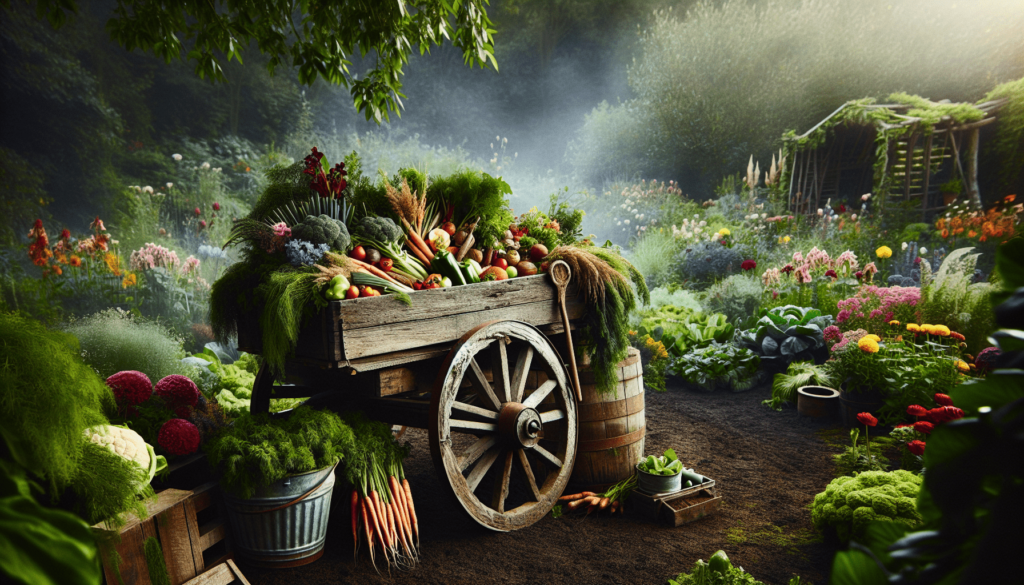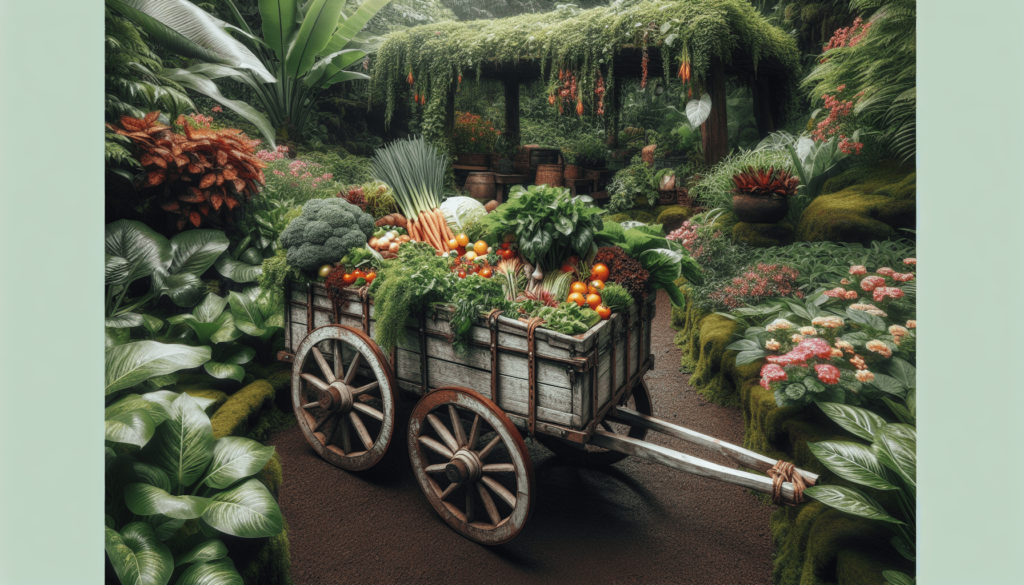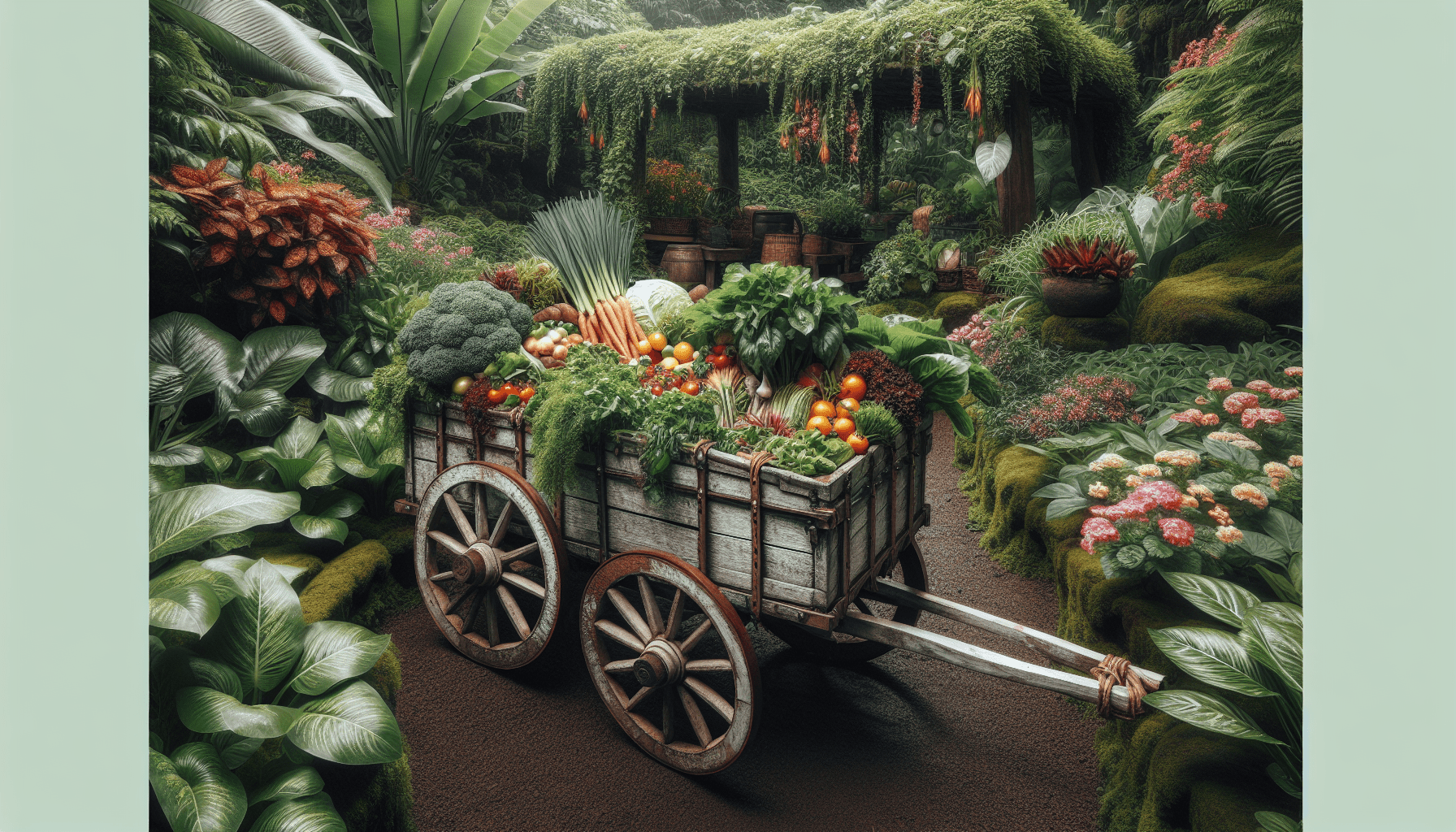What would your gardening experience be like if you had a reliable buddy to help with all the heavy lifting? Imagine having a tool that not only eases your workload but also aligns perfectly with the principles of sustainable landscaping. That’s where garden carts come into play.

Understanding Sustainable Landscaping
Sustainable landscaping isn’t just a trend; it’s a philosophy that emphasizes the importance of using environmentally friendly practices to create beautiful outdoor spaces. It’s about planting native species, managing resources wisely, and minimizing waste. By embracing this approach, you not only contribute positively to your environment but also create a picturesque landscape that flourishes.
Incorporating sustainable landscaping principles in your garden involves thoughtful planning, which is where a garden cart can be invaluable. A garden cart allows you to transport materials effortlessly, saving you time and energy while allowing for smarter management of your resources.
The Benefits of Using Garden Carts
Efficiency
One of the biggest advantages of utilizing a garden cart is the sheer efficiency it brings to your gardening tasks. Carrying soil, plants, and tools can be labor-intensive, but with a garden cart, you’re essentially creating a mini transportation system for your garden projects. Imagine how much easier it would be to haul your compost and mulch! Less physical strain means you can spend more time enjoying your green space rather than regretting your sore back.
Versatility
Garden carts come in various shapes and sizes, making them incredibly versatile for a range of tasks. Whether you’re moving heavy planters, carting tools, or gathering fallen leaves, there’s likely a suitable cart for the job. This multifunctionality ensures that your gardening efforts remain efficient and enjoyable.
Sustainability
Using a garden cart fits seamlessly into sustainable landscaping practices. By minimizing trips back and forth, you reduce fuel consumption in gas-powered devices, and if you opt for a manual cart, you’re also contributing to physical fitness! The reduction of wear and tear on your lawn or garden pathway is another bonus—less compacting leads to better soil health.
Storage Solutions
Many garden carts come equipped with additional storage options. This feature allows you to keep your tools organized while reducing clutter around your garden area. Having everything you need within reach can significantly enhance your workflow and keep distractions at bay.
Types of Garden Carts
Choosing the right garden cart for your needs depends on several factors, including the volume of material you usually transport and your specific gardening tasks. Here’s a quick breakdown of popular types and their characteristics:
| Type of Garden Cart | Description | Ideal Use |
|---|---|---|
| Wheelbarrows | A classic option with one or two wheels and a bucket for easy lifting and dumping. | Ideal for heavy loads like soil and mulch. |
| Utility Carts | Often made of durable plastic or metal with flat surfaces and multiple compartments. | Perfect for organizing tools and moving lighter materials. |
| Garden Wagons | Stable, four-wheeled carts with sides that can often collapse or fold down. | Great for carrying larger plants and larger quantities of soil. |
| Dump Carts | Designed to be towed by lawn tractors; they come with a tipping feature for easy unloading. | Ideal for larger gardening projects. |
Each type brings its own advantages, so consider your regular tasks and choose accordingly.

Selecting the Right Garden Cart
Assess Your Gardening Tasks
Before diving into the decision-making process, take a moment to assess your specific gardening tasks. Are you often moving heavy materials, or do you primarily need something handy for carrying light tools? Understanding your primary needs can guide you toward the right choice without unnecessary purchases.
Material Matters
Garden carts are typically constructed from various materials including wood, metal, and plastic. Each material offers its own range of pros and cons.
- Wooden Carts: Often aesthetically pleasing but can be prone to wear and may require maintenance.
- Metal Carts: Known for durability but can be heavier.
- Plastic Carts: Lightweight and resistant to weather but may not support as much weight.
Consider your garden’s climate and your personal preferences to find the best material for you.
Storage and Space
Think about where you will store your garden cart when it’s not in use. Some carts fold down for easy storage, while others are bulkier. Your available space can significantly affect your decision.
Weight Capacity
Lastly, check the weight limits for any cart you’re considering. Buying a cart with higher weight capacity ensures that you can transport even the bulkier materials without straining the cart.
Caring for Your Garden Cart
Investing in a garden cart is just the beginning; proper care can extend its life and keep it functioning efficiently. Here are a few tips to maintain your garden cart in optimal condition.
Regular Cleaning
After using your garden cart, take a few moments to clean it. Removing soil, leaves, and other debris can prevent buildup that may cause rust or damage over time. A simple wipe-down can go a long way.
Check for Damage
Whether made of metal or plastic, regular inspections for cracks, rust, or any signs of wear can help you catch problems early. When problems arise, small repairs can save you from the need to buy a new cart.
Store Properly
Whenever possible, store your garden cart in a sheltered area away from the elements. If it must remain outside, consider covering it to protect against rain and sun damage.
Best Practices for Sustainable Gardening with Carts
Efficient Material Transport
Always plan your tasks before starting. Try to gather all the materials you need ahead of time to minimize trips. When you load your cart, stack your items strategically to balance weight and maximize space.
Composting and Recycling
When working in your garden, a cart can greatly enhance your composting efforts. Use it to transport kitchen scraps or yard waste to your compost pile efficiently. By keeping waste out of landfills, you’re contributing to a more sustainable environment.
Collaborate with Nature
A garden cart can help you be more mindful in your approach to landscaping. Gather seeds, clippings, and cuttings to create new plants or enrich your soil. By engaging in this sustainable practice, you’ll create a resource-rich garden while minimizing waste.
Keep It Local
Whenever possible, use locally sourced materials for your landscaping projects. A garden cart can aid in transporting native plants or local amendments, which can enhance your garden’s ecological integrity.
Creating a Sustainable Landscape with Garden Carts
Planning Your Layout
As you embark on transforming your landscape sustainably, consider using your garden cart to shape your layout. Moving your plants around helps visualize their placement before committing to a spot. Using a cart allows you to transport your plants without much fuss.
Proper Plant Placement
When planting, ensure that each plant has the space and resources it needs to thrive. Utilize your garden cart to transport soil amendments directly to the plant sites. This approach reduces disturbance to existing plants and keeps the workspace tidy.
Seasonal Use
In seasonal gardens, a garden cart can make a world of difference. From planting in the spring to harvesting in the fall, your cart can adapt alongside your needs. Migrate plants, tools, and harvests without added strain.
Enhancing Aesthetics with Garden Carts
Garden Decor
A garden cart can function beyond transportation; it can serve as a decorative element. Consider using a vintage cart filled with colorful flowers or herbs to enhance your garden’s aesthetic. It can become a conversation piece that adds character to your outdoor space.
Personal Touch
You have the freedom to personalize your cart according to your style. Paint it in your favorite colors, or add some artistic touches to reflect your personality. A touch of creativity can make your gardening experience more enjoyable.
Seasonal Displays
Transform your garden cart into a seasonal display by filling it with harvested fruits, festive flowers, or seasonal decorations. It can serve to enhance your landscape while showcasing the fruits of your labor.
Community Gardening and Collaboration
A garden cart can also play a pivotal role in community gardening. Whether you’re part of a neighborhood initiative or engaging in collaborative green spaces, having a shared tool like a cart can bring everyone together.
Sharing Responsibilities
In community gardens, sharing tools eases the burden on individual members. A communal garden cart can help everyone contribute equally, whether they’re gathering materials or transporting harvests.
Engaging the Community
Participating in community gardening events often involves heavy lifting. Having a garden cart available can encourage more individuals to participate, knowing it eases the workload. Engage in teamwork while enjoying the benefits of nature and collaboration.
Conclusion: The Lasting Impact
Adopting the use of garden carts not only optimizes your gardening tasks but also aligns beautifully with sustainable landscaping goals. As you move toward greener practices, remember that every small change counts. By integrating a garden cart into your routine, you enhance not only your experience but also your surroundings, creating a thriving ecosystem that benefits you and the environment alike.
Ready to give it a try? You might find that a garden cart becomes an essential part of your gardening tools, making each project feel lighter and more enjoyable. You’ll be amazed at how this small addition can shape your gardening efforts, transforming them into gratifying endeavors that bring beauty and sustainability to your outdoor space.

